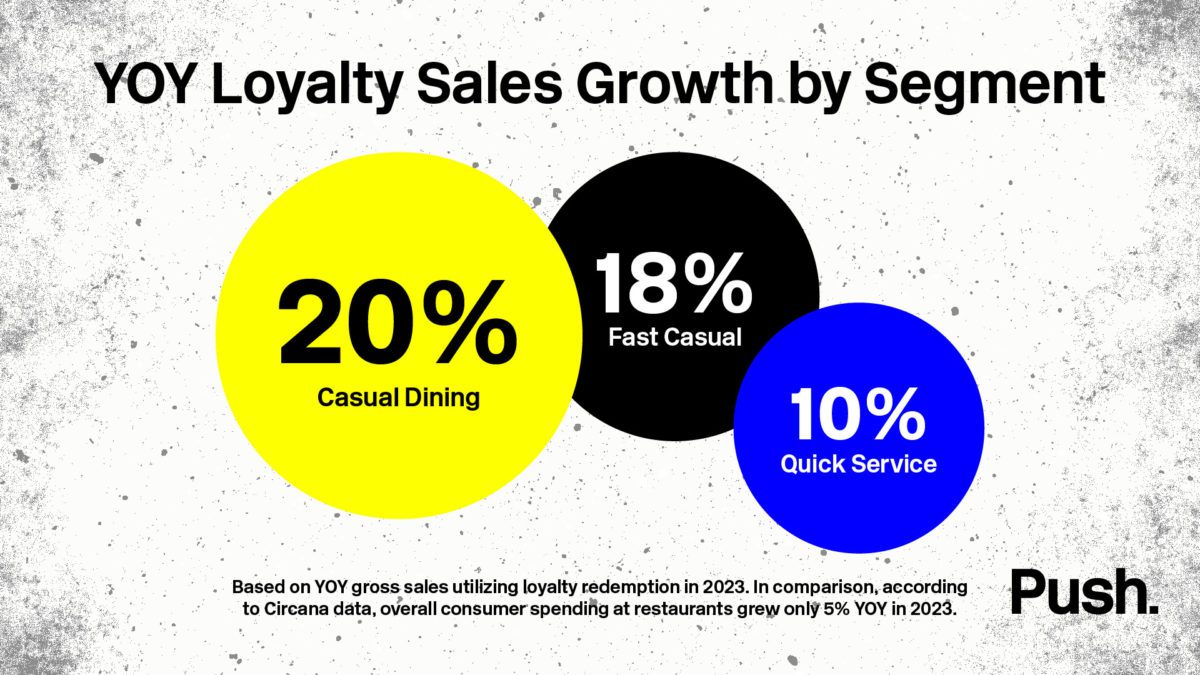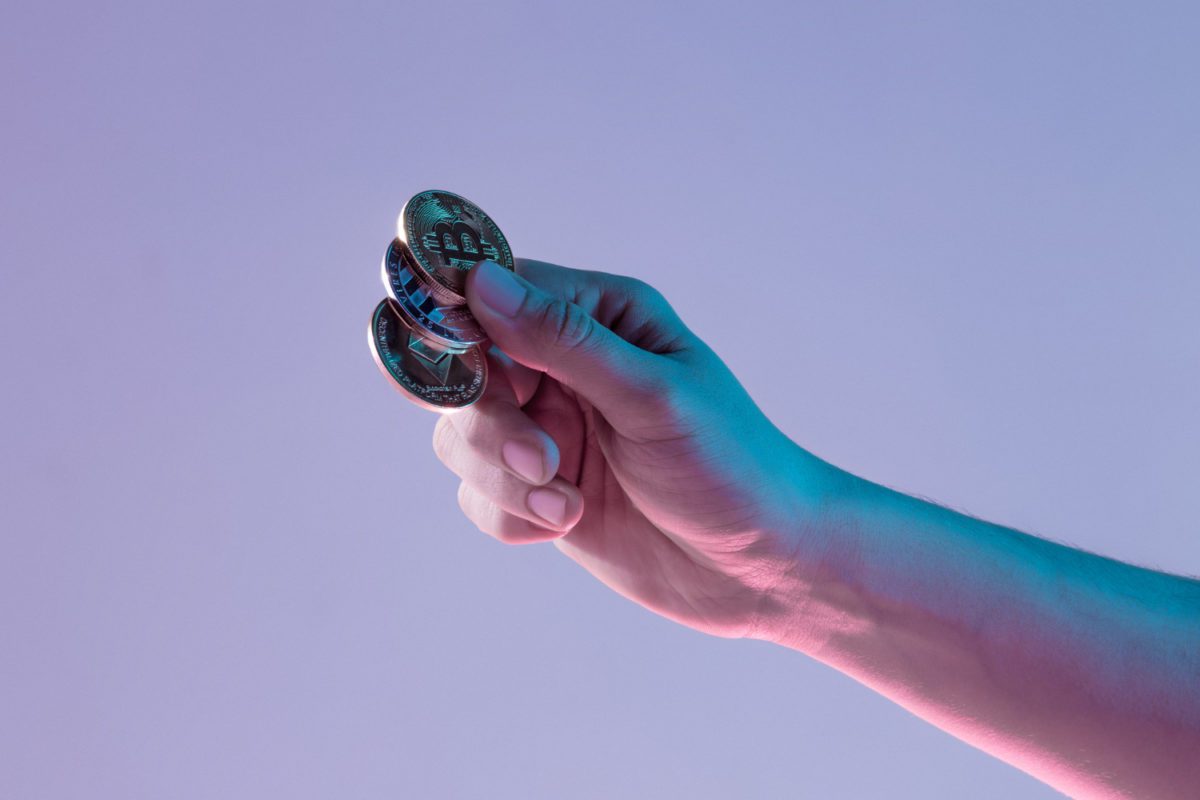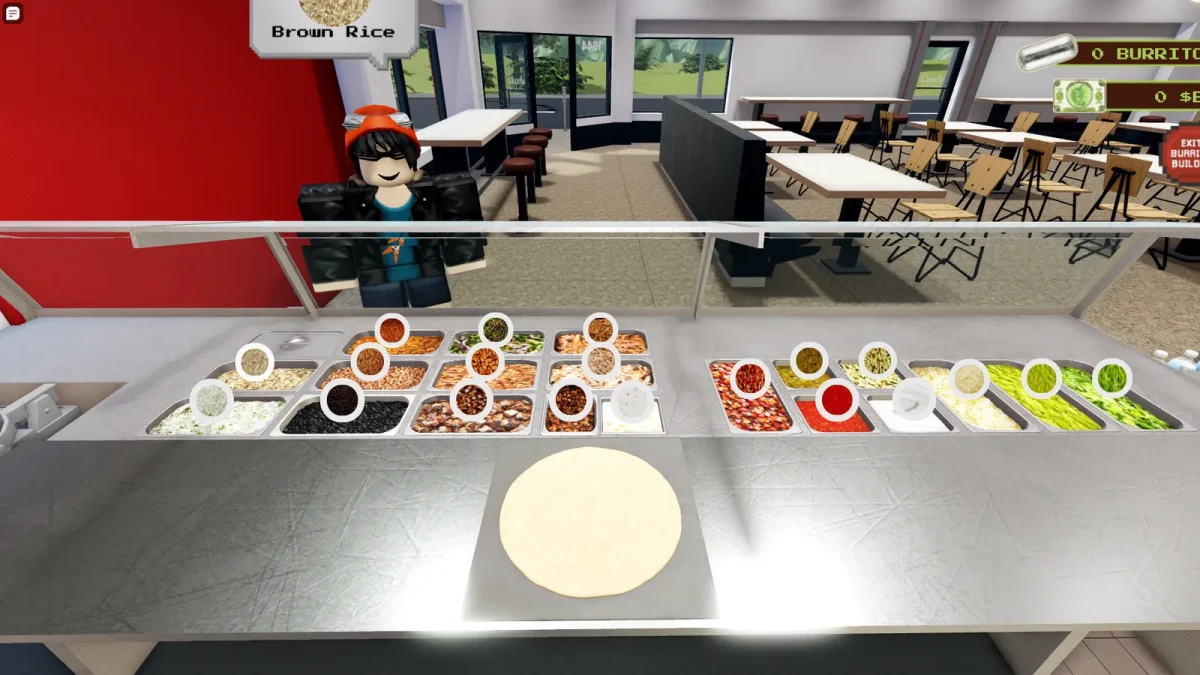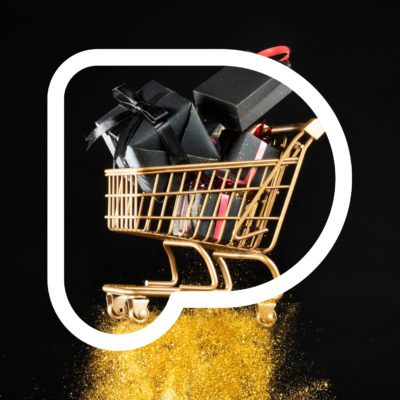Keeping customers coming back is no longer just about good food—it’s about building relationships. The secret sauce in turning infrequent diners into regulars? Loyalty programs. They’re essential for driving customer retention and increasing lifetime value. But traditional punch cards and basic rewards are no longer enough—innovation is the name of the game. And as loyalty engagement soars this year, it’s more important now than ever before that you encourage unique interactions with your customers.

In this blog, we’ll explore the key trends reshaping loyalty programs and the cutting-edge strategies that are setting some restaurant brands apart.
Before we begin, it’s important to note that many people, even in our field, will use the terms “loyalty program” and “rewards program” interchangeably. However, there are nuanced differences between the two.
Loyalty programs are created with the intent of affecting consumer behavior by shaping their consideration set and improving their long-term relationship with the brand. Thus, influencing customers to return with greater frequency than would have otherwise been the case. Loyalty programs do so by offering incentives for repeat business, often through points or tiered levels of engagement A rewards program is nearly always a component of a loyalty program, but rewards programs are more transactional. They offer customers immediate benefits or discounts after specific purchases. Both aim to increase customer retention, but loyalty programs encourage ongoing engagement.
Taking Loyalty to the Next Level
Loyalty programs are getting a serious tech upgrade, making things more personalized and fun than ever before. Mobile apps like Starbucks Rewards and Dunkin’ Donuts DD Perks make tracking points and offers a breeze, putting everything you need right at your fingertips.
Then there’s AI, machine learning, and personalization tools, which when utilized effectively enable brands to tailor recommendations and predict exactly what you’ll want next. Getting offers that feel like they were made just for you? That’s not just a future dream—it’s today’s reality.
Another game-changer? Blockchain and cryptocurrency are making waves in the loyalty space. Burger King’s Royal Perks, for instance, lets members earn Bitcoin, Ethereum, or Dogecoin with qualifying orders (https://www.bk.com/crypto). Beyond the buzz of earning crypto, blockchain brings security and transparency to the table. Each transaction is recorded in a permanent, tamper-proof database, preventing fraud and saving restaurant brands money in the long run. It’s a win-win: cool rewards for customers and smart solutions for brands.

Tiered Programs That Play to Win
Tiered loyalty programs are a fantastic way to keep customers hooked because it’s gamifying the experience. Each time you visit you get closer to reaching a new reward with points systems and challenges. Take Panera Bread’s MyPanera program, for example. The more you visit, the more perks you unlock, making each trip feel like a win.
But why settle for just discounts? Restaurants are getting creative with experiential rewards like exclusive chef’s table dinners, cooking classes, and special events that add a touch of magic to the dining experience. A great example of a brand utilizing gamification in their loyalty programs is Chipotle, who takes a fun approach by mixing virtual gaming with digital perks and IRL redemptions. They recently launched their grill simulator, which is a game available on the Roblox platform involving digital “tasting” using a virtual fork. The first 100,000 users who complete the simulation will earn a free entrée code to sample the actual menu item that they digitally prepared.
Not only is this kind of program innovative, but it strategically engages a specific segment of their audience. The feedback has been overwhelmingly positive, showing that when you blend gamification with digital ease, you can create a loyalty app that’s both engaging and rewarding.

Tap Into Rewards with Mobile Apps
The days of rifling through your purse for a punch card or coupon have fallen by the wayside. If you don’t have an app that allows for rewards and engagements to be stored all in one place, you have fallen behind. Many of us are familiar with Starbucks Rewards, which is a standout example of a loyalty app done right. If you’ve used it you know they’ve nailed it with a sleek mobile app design that tracks your rewards, offers personalized deals, and makes ordering a breeze. With a mix of real-time rewards tracking and exclusive offers that make customers feel like VIPs, Starbucks shows that a well-designed app and a dash of exclusivity can keep customers coming back for more. Chick-fil-A One is also a masterclass in utilizing a rewards app to personalize rewards and engage customers. They use data to tailor rewards and offers to each customer’s preferences, which makes everyone feel like they’re getting special treatment. Their comprehensive approach and personal touch has done wonders for keeping customers coming back, and the tracking that makes this dynamic strategy executable is made possible only through the interface of an app.
Push’s take on building successful loyalty programs
Now that we’ve covered some of the innovations you may consider incorporating into your loyalty program, let’s talk about the strategies needed to create a successful loyalty program that have not changed. When helping our clients develop and refine their loyalty programs, there are a few tenets that we always consider to ensure our success, and they are:
Well-Timed Communication
Staying top of mind is key, but there’s a fine line between keeping customers in the loop and spamming them. Email, SMS, and push notifications are great tools for staying connected, but the trick is finding the sweet spot—just enough updates to keep them interested without overwhelming them. Think of it as
dropping little reminders that show up just when they’re most likely to engage. This is another reason that utilizing apps for loyalty programs is so crucial. Mobile devices unlock real-time, location-based redemption capabilities that are simply unavailable otherwise. With these capabilities, apps can even deliver personalized offers precisely when users are nearby or most likely to engage.
A great example of that was the loyalty campaign we ran for Cinnabon. Not only did we run a proximity targeting campaign to drive potential customers in real-time when they were within a 1-mile radius of a participating Cinnabon, but we also created a custom audience based on dwell time. Meaning we considered not only where these prospective targets were, but how long they had been there. If a user was consistently within the 1 mile radius of a Cinnabon for more than 4 hours we could infer that they likely worked at the mall, and would therefore be more likely to participate in a loyalty program if the offers were compelling, consistent and offered during lunch and break times.
It’s worth noting that dynamic pricing does not have the same incentivizing effect as offering discounts at a particular time. We would encourage brands to proceed with caution if considering dynamic pricing, as your customers may take notice and create public pushback. Instead, if you’re considering dynamic pricing we suggest adjusting base price accordingly and offering reminders or even discounts based on people’s timing and use patterns.
Prioritize Personalization
As mentioned above, it’s becoming easier than ever to personalize the offers you are sending to your customers, and as such, it’s become our recommended best practice. We recommend utilizing analytics and customer behavior insights to offer personalized recommendations, discounts, and rewards tailored to individual preferences. We do so because we know personalized rewards outperform generic offers. In fact in our experience, 4 out of 5 people are more likely to buy when brands offer individualized interactions.
For example, in our work with Winn Dixie and their rewards app, we know that shoppers may increase their shopping frequency if they are offered incentives on items they would typically buy. As a result, the app utilizes individual customer data regarding past purchases to tailor its savings to the habits of each user. The offer is framed as “the more you shop, the more we learn about your favorite groceries, so we can let you know when they’re on sale”, making customers feel like they are engaging in a personalized shopping experience if they redeem the app’s offers.
As with any offer, it’s important to make sure you are not simply providing discounts to users who were going to make a purchase regardless of your offer. Use previous customer data to determine that the difference between a completed transaction or not, was in fact your well-timed loyalty touchpoint. In the Winn Dixie example above, while customers may have gotten a deal on a particular item they may have purchased either way at a later date, the offers have proven successful in getting customers to come in sooner than they would have otherwise. This increases net sales overall, as we know that shoppers rarely only buy one item at a time during trips to the grocery stores.
Ease of Integration
And finally, it’s important to remember there’s no value in a service that people aren’t using. Having your loyalty program, ideally your loyalty app, be easy for customers to integrate into the way they already shop and dine is essential for your campaign’s success. All app design should prioritize the user experience, be designed in an intuitive and attractive way, and have fast page load times. Ensuring that you have appropriately predicted your user’s needs and have designed in a way that prioritizes your core features and offers is imperative. A great example is the loyalty app created for burger darling Smalls Sliders loyalty. By utilizing graphic elements and limited copy, users can quickly understand how to engage with Small’s offers.
With all the innovations currently being integrated into restaurant loyalty programs, it can be overwhelming to decide what’s the best fit for your business today. We encourage our customers to think about creating timely offers, personalizing rewards, potentially introducing a gamified app, and integrating all the latest tech trends to keep their customers engaged. It won’t only increase your customer retention, but it’ll boost your bottom line in the long run. If you find yourself seeing the value in a stronger loyalty program but aren’t sure where to start, give us a call.




